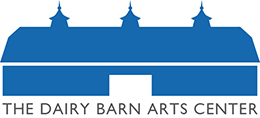One of the jurors, Gary Schwindler, wrote the following about the show:
QUILT NATIONAL ’79 demonstrates eloquently two important phenomena characteristic of the contemporary American art scene. First, there is increasing prominence of the so-called “crafts” within the broad spectrum of the plastic arts; and second, quilting in particular is emerging as a vital category of the fiber arts and possesses enormous expressive potential.
American quilt making is now at a stage of experimentation and development as it prepares to take its place as a major form of artistic endeavor. This notion is supported by the variety of media employed and the number of directions indicated by the artists represented in QUILT NATIONAL ’79.
Such a broadening of the horizons in American quilt making no doubt reflects tendencies notable in most of the other American arts produced in the last few decades. For example there has been a reduction, if not complete elimination, of arbitrary barriers of media between categories of art. There has also been an increased interest in industrial materials and processes for artist purposes and a willingness on the part of “serious” artists to explore and enter into modes traditionally excluded from the status of “fine” art.
The appeal which quilt making presently exerts on American artists is indicated by the demographics of Quilt National ’79. Originally, 196 individuals from 43 states entered 390 works. Of these, 56 quilts by 44 artists from 20 states were accepted for the exhibition.
Certain regional patterns emerge from the final selection. As might be expected, a considerable number of works come from Ohio and states close by. New England is also well-represented. It is important to note that both regions have a long historical tradition of quilt production. A significant showing from California indicates the importance of the quilting arts on the West Coast.
It will interest some to learn that barely a half-dozen men entered quilts for the competition in Quilt National ’79. As it turned out, none made the final selection by the judges.
There is considerable experimentation as well as a variety of format, techniques, and materials found among the exhibits of Quilt National ’79. Scale ranges from the miniature Untitled by P. Cuppini (10″ x 10″) to the monumental Another Day by C. Muller (104″ x 111″). Formats include the standard assortment of squares and rectangles, but such works as Triptych by S. Hoskin and Equis Robis I by S. Robinson are unusual. The latter is a custom-shaped body covering for a horse. Many will regard this and Ms. Robinson’s Equis Robis II as the most unique quilt forms on display here.
A number of artists have chosen to use materials outside the standard quilter’s repertoire. Both M. Ugrinov’s Paper Quilt II and K. Hagemeister-Winzenz’s Quilt Progression: Fading employ hand-made papers in their construction. Hand-made papers are among the most recent interests of a growing number of printmakers, sculptors, and draftsmen, and the appearance of such papers in quilting is of special significance.
Piecework and appliqué, the traditional quilting techniques of assemblage and embellishment, are predictably the most frequently used techniques among the Quilt National ’79 displays. However, batik is used by artists such as A. Rankin, N. Koons, and J. Mathieson, while photo-silkscreen and cyanotype are found in works by P. Cuppini and T. Brown respectively. A range of other printing methods including transfer and block printing will also be noticed.
Some conspicuously unique and innovative techniques and methods can be seen in S. Kolojeski’s Wrappers which uses color xerography; the modular, detachable construction of Puzzle Quilt by J. Marquess [Carey], which enables an infinite number of permutations to be derived from the basic set of quilted units; and the sensitive ink renderings of figures in Isadora Floating I & II by C. Nixon[-Hudson], which brings to the quilting art a reference to Old Master drawing.
Many viewers will make connections between the quilts exhibited in Quilt National ’79 and certain twentieth century painting. The quilts of N. Crow and F. Barnes suggest affinities with Synchronism, Art Deco, and the paintings of Frank Stella. Quilts by D. Millard [Lunn], C. Baker, V. Randles, C. Buck, and S. Hoskin can be related to paintings and prints which explore optical effects or reflect Minimalist concerns. Representational modes are not without modern parallels, too. B. Cullinan and S. Wise have provided the exhibition with images which can to some extent be associated with California Funk.
By its size and the breadth of its representation, Quilt National ’79 has immediately assumed the status of a milestone in the history of American art quilting. It also represents a major event in the art activities of Southeastern Ohio. Conceived and transformed into a reality by a dedicated, tireless group of local artists-craftpersons, it is the hope of many that this inaugural Quilt National will be followed by a series of events which will function as an important forum for the display and dissemination of living American art traditions.
